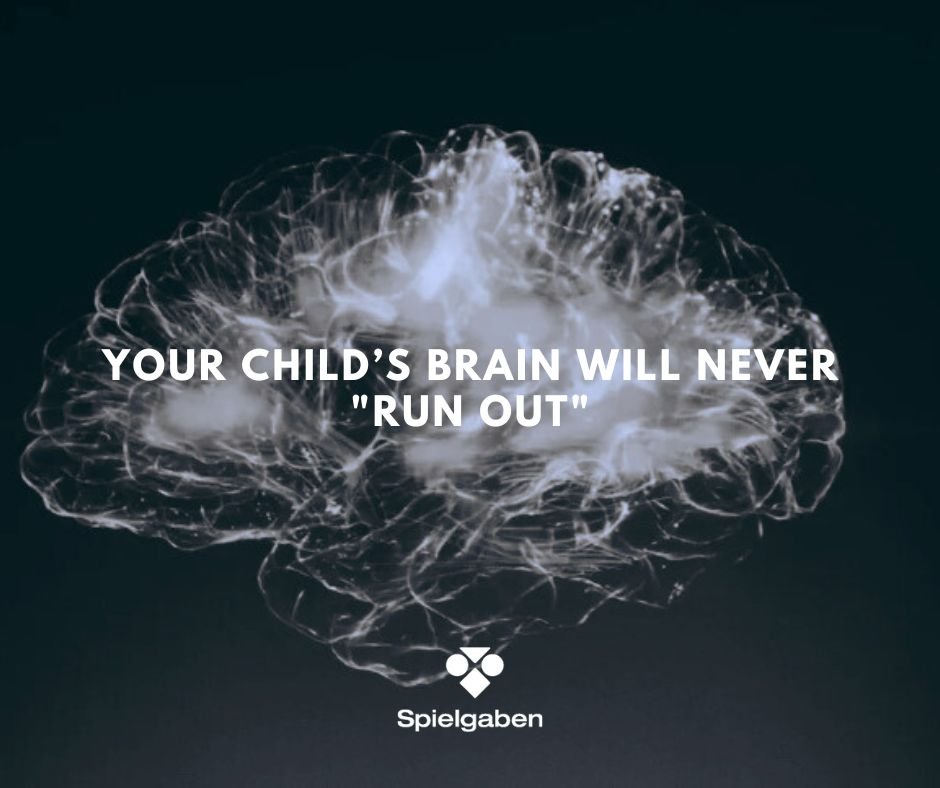Myth Busted: Your Child’s Brain Will Never “Run Out” of Neurons
As parents, we all want our kids to grow up smart, capable, and resilient. And, here’s a fun fact—your child’s brain is far more adaptable and “upgradeable” than you might think!
The brain isn’t a static machine destined to burn out like an overworked engine. Instead, it’s a self-renewing, ever-changing powerhouse capable of growing new neurons with the right stimulation.
Yes, you heard that right. New neurons! It’s as if the brain is holding secret “renovation parties” in the neural corridors, and you have an invitation to boost this process with some clever parenting hacks.
So, if you’re tired of hearing that old myth that “every hard math problem kills a few more brain cells,” We are here to reassure you: your child’s brain is constantly replenishing itself, and you can help make this happen. Let’s dive into how you can support your child’s brain growth in ways that are not only effective but fun!
Myth Busted: Your Child’s Brain Won’t “Run Out” of Neurons
We’ve all heard the phrases—”This test is killing my brain cells,” or “My head hurts from all this thinking.” As witty as these sayings sound, they’re based on the misconception that the brain is a ticking time bomb, losing neurons with every challenging task as time passes by. Here’s the truth: on average, the human brain does lose some neurons daily (about 85,000), but there are still 40 billion neurons in the cerebral cortex alone. For perspective, if your child lost 85,000 neurons every day, they could still go on to ace calculus in high school, win a chess tournament, or become the next big tech innovator—without a dent in their brainpower.
In fact, the human brain is capable of creating new neurons throughout life, a phenomenon called neurogenesis. But the best part? You can help accelerate this process with some simple daily activities. Let’s explore how!
How to Help Your Child Grow More Brain Cells Daily
Challenge Their Minds with Fun Puzzles and Brain Games
Ever tried to solve a Rubik’s Cube or crack a riddle? These types of challenges work wonders for brain growth. When your child tackles problems that force them to think outside the box, it stimulates neurogenesis. Instead of thinking of brain cells like a precious currency that will deplete, consider every brain-teaser a ticket to more neurons! Start a family “Puzzle of the Week” tradition—whether it’s crossword puzzles, sudoku, or a math problem. Celebrate your child’s victories, and don’t worry if the answers don’t come easily; it’s the struggle that builds brain power.
Introduce a New Language or Skill
The brain loves novelty. Just as learning a new song helped birds grow new neurons during mating season (seriously!), your child’s brain will grow when they learn new things. Introducing a new language, musical instrument, or even a sport works wonders. For younger children, bilingual games or singing songs in another language can be a great way to engage both the left and right sides of the brain. The earlier you start, the more flexible their brains will remain.
Encourage Physical Exercise (Yes, It’s a Brain Booster!)
When your child is running around outside or riding a bike, their body isn’t the only thing getting stronger—their brain is, too. Physical exercise increases the production of neurons in the hippocampus, the part of the brain responsible for memory and learning. Research even suggests that physically active children perform better academically. So, don’t just limit exercise to gym class; take family walks, play soccer in the park, or start a jump rope challenge at home. It’s a win-win for both physical health and cognitive growth!
Neuroplasticity: Your Brain’s Superpower (And Your Child’s Too)
Now, let’s talk about neuroplasticity, the brain’s ability to adapt, reshape, and form new connections throughout life. It’s like giving your brain a set of Legos—it can build and rebuild as often as needed. Every time your child learns something new or faces a mental challenge, those brain “Legos” are shifting and forming stronger connections.
Here’s how to boost your child’s neuroplasticity daily:
1) Embrace Mistakes and Encourage a Growth Mindset
Mistakes are golden opportunities for brain growth! When your child gets a math problem wrong or struggles with spelling, instead of getting frustrated, remind them that this is exactly how their brain builds new pathways. By encouraging a growth mindset—the belief that effort leads to improvement—you’re helping them rewire their brain to become more resilient and capable of tackling future challenges. Next time they mess up, smile and say, “That’s just your brain leveling up!”
2) Rotate Interests: Don’t Be Afraid of Variety
Does your child like to jump from one interest to another? Maybe it’s dinosaurs one week and space the next. Embrace it! The brain thrives on diverse stimulation. Encourage your child to explore different subjects and hobbies. Today they’re drawing, tomorrow they’re coding, and the next day they’re learning to bake cupcakes. Each new activity helps form different neural pathways, making their brain more adaptable and versatile. In the long run, this strengthens their cognitive abilities across the board.
3) Storytelling and Imaginative Play
Believe it or not, engaging your child in creative storytelling or role-playing can significantly boost neuroplasticity. When kids imagine new worlds, characters, and scenarios, their brain has to create new neural connections to support these thoughts. Bedtime stories, playing with action figures, or even inventing their own comic books can all help activate different parts of the brain. Plus, you get the bonus of some great family bonding time!
Brain Health Tip: It’s Never Too Late to Start
While your child’s brain is primed for growth and learning, it’s also true that the brain continues to evolve and grow throughout life. A fascinating study from the University of Rochester showed that the brain of a 20-year-old and the brain of a 70-year-old person contain roughly the same amount of neurons, thanks to cell regeneration.
This means that there’s always room for improvement! Whether your child is 5 or 18, it’s never too late to begin incorporating brain-boosting activities into their daily routine. Challenge them to take up a new skill, spark their creativity with art or music, and most importantly, make learning a fun and adventurous part of life.
Bring It Home: Practical Steps for Parents
- Daily Brain Breaks: Set aside time for a daily “brain break” where your child engages in a stimulating activity that’s different from their usual routine. Try a quick puzzle, a silly song, or learning a new word in a different language.
- Mix Physical with Mental: Combine exercise with mental challenges. For example, try playing hopscotch with math problems—every jump equals a number to add or subtract. Or, play catch while quizzing them on spelling words.
- Celebrate Curiosity: Ask “what if” questions during meals or car rides. Encourage your child to come up with imaginative answers, building their creativity and problem-solving abilities.
Don’t Be Afraid to “Outsmart” the Myth
In the end, the notion that our brains are limited or wear out with age is outdated. Your child’s brain is growing, evolving, and creating new neurons every single day. By integrating fun challenges, fostering a growth mindset, and encouraging both physical and intellectual activity, you’re setting them up for a lifetime of learning, resilience, and mental agility.
So, parents, it’s time to ditch the “brain cell depletion” myth and embrace your role as the guide to your child’s thriving, ever-expanding mind. And remember—there’s always time for a brain-boosting game or two. Who knows, you might even grow a few new neurons yourself!













LEAVE A COMMENT